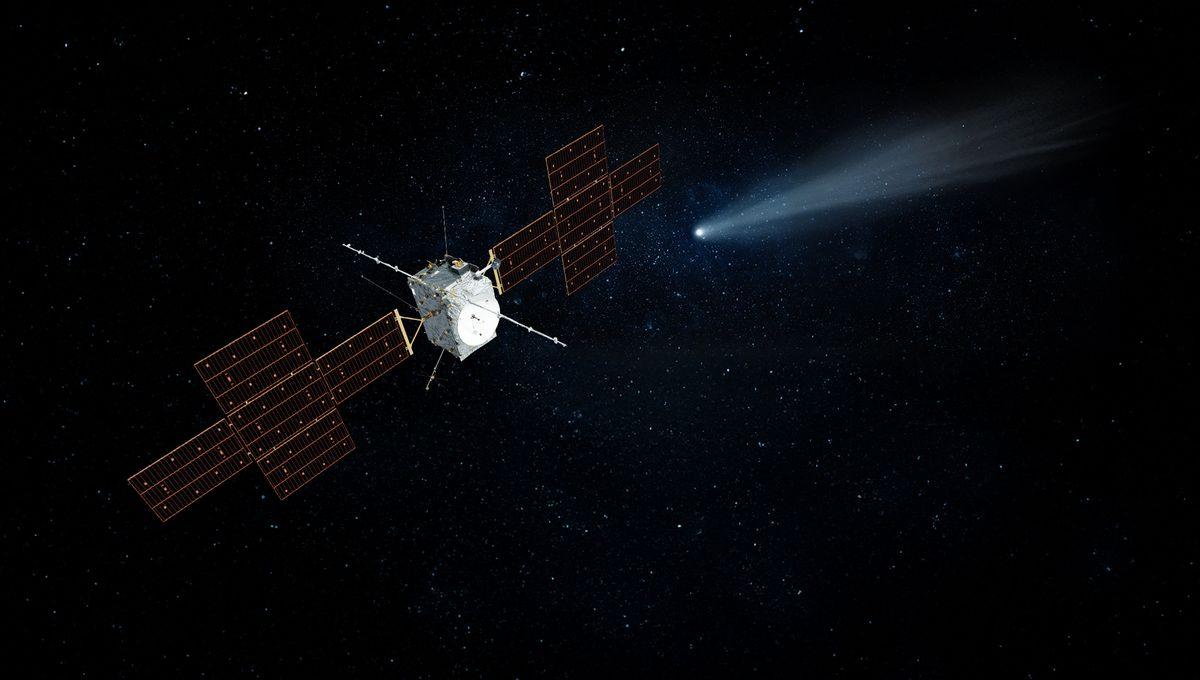-
Новости
- ИССЛЕДОВАТЬ
-
Страницы
-
Статьи пользователей
-
Форумы
Jupiter-Bound Mission To Snap Interstellar Comet 3I/ATLAS: "This Campaign Was Unexpected For Everybody"

Jupiter-Bound Mission To Snap Interstellar Comet 3I/ATLAS: "This Campaign Was Unexpected For Everybody"
We have known about Comet 3I/ATLAS for just over four months, and astronomers across the world have been giddy with excitement. This is only the third known interstellar object to have crossed the Solar System, among the thousands that should be here every day. Researchers have been using many different observatories to study this comet, and soon it will be the turn of one unlikely mission.
The rest of this article is behind a paywall. Please sign in or subscribe to access the full content. That mission is the European Space Agency’s JUICE, and it is going to be revolutionary. It involves an interplanetary spacecraft whose goal is to study the icy moons of Jupiter: Ganymede, Callisto, and Europa. It will characterize the interior of these worlds, which are likely to hide a liquid ocean, and even become the first spacecraft to enter orbit around a Jovian moon: Ganymede, the largest moon in the Solar System and the only one with a magnetic field. All that is due to happen in the early 2030s, and in the meantime, JUICE is slowly traveling in the inner Solar System. The path might seem peculiar, with flybys of Earth and Venus, but it allows the spacecraft to save fuel before getting to Jupiter. Serendipitously, it will also take JUICE relatively close to Comet 3I/ATLAS, just after the comet experiences the aphelion, its closest passage to the Sun. The comet will be 210 million kilometers (130 million miles) from the Sun, and JUICE will be 64 million kilometers (40 million miles) away. That’s almost half the distance between the Earth and the Sun, which is 1 astronomical unit (AU). “JUICE will observe 3I/ATLAS between 2 and 25 November. We will be using 5 instruments: the camera, the near-infrared imaging instrument, the UV spectrometer, the sub-millimetre instrument, and a sensor to image neutral atoms. We are far away (0.5 Astronomical units), therefore, only remote sensing,” Olivier Witasse, ESA Project Scientist, told IFLScience. JUICE is designed to operate around Jupiter, so it has been decided that the safest option is to take a peek at the closest proximity and then again a few weeks later, when it is safe to study it for a bit longer. The opportunity to check an interstellar comet up close could not be missed, and it is a new, unplanned test for the spacecraft. “This campaign was unexpected for everybody! For JUICE, indeed, we are in a cruise phase during which there are thermal constraints, being relatively close to the Sun (with respect to the science phase around Jupiter). Therefore, no payload activities were expected to take place at this moment. However, given the uniqueness of these observations, it was decided to prepare this extra observation planning,” Witasse told IFLScience. The comet is currently being hidden by the glare of the Sun, so to keep an eye on it, last week, NASA and ESA deployed their robotic explorers on Mars. The first images from Mars might have been snapped, and more data is on its way. While it is exciting to use a spacecraft to see new details of an interstellar object, the celestial alignment means it will take a while for the data to arrive. “Due to the position of JUICE with respect to Earth, the data rate is very low. We expect the data to be downloaded only in February 2026, so we need to be a bit patient,” Witasse told IFLScience. Comet 3I/ATLAS will be closest to Earth on December 19, though not very close. It will be 268 million kilometers (167 million miles) away.


